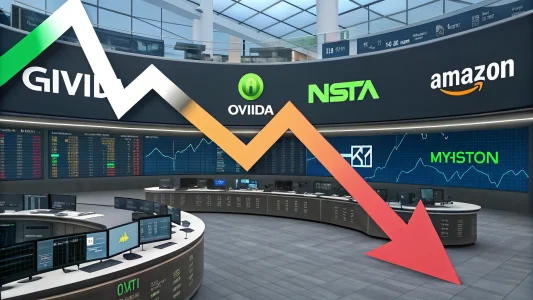Planning for retirement requires understanding shifting trends and taking advantage of the tools available. Many worry about having enough money to retire and enjoy their golden years. Some tech tools will increase your savings and make decisions more intuitive.
Using tech tools to plan your retirement means you can meet with advisors anywhere without traveling to them. You can learn about the history of markets and perform analysis based on current events. Choosing the right technology can increase savings and give you peace of mind.
Table of Contents
ToggleHow Technology Enhances Retirement Planning
Just 13.3% of people feel very confident in their retirement planning and ability to meet personal financial goals. Advances in artificial intelligence (AI) and machine learning are putting more data at the fingertips of ordinary individuals, making it possible to plan out the future more confidently. Technology plays several roles in financial planning that can help you get where you need to be and exit the workforce.
Personalized Suggestions
While having a human, financial advisor (FA) is crucial as they understand all the eccentricities of your lifestyle, computers can take data on your habits and come up with suggestions for how much money you need to save and whether your investments should be risky, safe, or moderate based on your age and other factors.
When used alongside a retirement planning specialist, you can create a plan that allows you to do the things you want now while preparing for retirement.
Automation
Technology allows you to automate deposits into your accounts, move money from one investment to another, and send alerts if something happens to the markets needing your attention. Artificial intelligence (AI) can even balance your portfolio if something is off-kilter.
Automation resists rash spending decisions, as it reduces the number of things retirement planners need to spend their mental energy on. Research backs up this fact. For example, participants in one study were asked to memorize either a two-digit or seven-digit number and then placed in a waiting room with snacks of either fruit or cake. Those who were more preoccupied trying to memorize the more complex number chose the cake 50% of the time — a decision that’s not as healthy in the long run but easier in the short term. The same goes for finances. The more things someone needs to keep track of manually, the less they’ll be able to resist impulsive urges like spending.
While many deal with daily distractions, computers can choose to avoid impulsive investments that might harm your bottom line.
Analysis
Even the most skilled FA can only sort through data with the help of machines. Technology excels at taking massive amounts of information, sorting it, and developing insights that help you invest wisely. The same tools can track results and make adjustments on the fly.
24/7 Access
Another advantage of modern technology is tracking investments around the clock and scheduling transactions in advance. You don’t have to wait until you can meet with a retirement planning specialist. You can get started anytime by logging into various platforms, depending on how you invest your funds.
Using Retirement Calculators as the Basis for Retirement Savings
Not sure where to start with your retirement planning? Many sites offer retirement calculators to help you figure out how much you’ll need to save and how to get there with monthly contributions.
Most people want to keep the same level of living they’re used to when they retire. A digital calculator is an innovative tool to assess how much you’ll need. From there, you can use technology to ensure you can save enough to enjoy your retirement fully.
Factors to Incorporate Into Retirement Calculation
You should always review any results with a financial advisor to ensure you’re considering all expenses. Some factors you should consider when calculating your needed retirement savings include:
- Cost of dependents: If you have a child pursuing higher education, you may need to save more to have enough funds to pay tuition and living expenses.
- Cost of living: When looking at how much you’ll need in retirement, you should also be sure to factor in the changing cost of living and rising expenses. While $1,900 a month might sound doable if you have zero debt, it could be much less when you factor in changing prices. Other expenses likely to rise include property taxes, travel expenses, new vehicle purchases, food, and utilities.
- Medical care: Medical expenses alone can bankrupt seniors if they don’t plan carefully. A healthy couple who are 65 will need around $300,000 in savings to cover their healthcare costs.
- Social Security: Most people qualify for social security payments after retirement age. You can apply for Social Security at age 62 and be eligible for Medicare at 65. The site also offers several calculators to help you see how much Medicare Part B (hospitalization) could reduce your SS income and to calculate how much you’ll receive monthly. Pay careful attention to guides on their site if you plan to continue working part-time after you retire. If you earn too much, it can impact your payments. You’ll receive full benefits at 65, so use the calculator to see how much you earn if you start withdrawing at different ages.
Seek a retirement calculator that factors in fluctuating prices as part of the equation for the best picture of how much you’ll need to save.
Which Types of Tech Tools Increase Retirement Savings?
Technology changes how people invest for retirement, simplifying complex calculations and providing in-depth insights. The U.S. Census Bureau estimates there will be around 83.9 million people over 65 by 2050. Computers give you an edge by sorting through massive piles of data and spitting out various scenarios and imagined results.
After calculating how much you need to save, here are some of the best websites, tools, and apps to help you grow your savings and reach your goals quickly.
1. Budget Apps
To save more for retirement, you must get a handle on your budget. When you have flexible spending, you have more to put aside for the future. Which budgeting app you use doesn’t matter as long as it helps you handle your expenses and get a handle on where your money goes.
Apps work well because they allow you to input spending on the go. You can track those little expenses that eat into your budget and make adjustments, so your paycheck stretches further.
2. AI Advisors
Some investment firms offer online platforms with robotic advisors to guide your decisions. If you choose to invest outside of an employer’s 401(k) plan, investment firms can be an interesting way to add to your other savings. You might choose to open a Roth IRA or even invest independently to move profits to your retirement fund.
Automatic investment management may also have lower fees that won’t eat into a small balance. The idea behind robo-advisors is to look at algorithms and make better decisions and intelligent, informed choices.
3. Mobile Payments
Your choices early in your work career can impact interest rates on the money you borrow, such as your mortgage. Making on-time payments can improve your credit score and reduce the amount you’ll pay over the life of your loan.
The mobile payments market is $14.99 billion and is projected to grow to $23.65 billion by 2030. Paying bills online also lets you integrate with budgeting software, so you can see what categories you spend the most on and make adjustments as needed.
4. Apps That Encourage Saving When Spending
Select one of the apps that squirrel money into your bank account each time you make a purchase. Mindless savings can add up. For example, if you buy lunch, the app will round your cost up to the nearest dollar and put the change aside for savings.
Not only will your bank account be easy to balance with whole dollar figures, but you’ll also save more than you otherwise would.
5. Education Platforms
The more you understand about how to save successfully for retirement, the better choices you’ll make. Several online education platforms offer courses in retirement planning, understanding investments and other strategies.
Look for sites such as Udemy and Khan Academy. Various financial institutions also provide free training for their clients. If you have an account with an online investment firm, poke around their website to see what’s available to increase your knowledge about stocks and bonds.
6. Debt Reduction Trackers
Many people’s debt is out of control. Outstanding credit card loans are over $1 trillion in the U.S. Around 28% of Americans have something in collections, and about 25% can’t repay what they’ve borrowed. For a secure retirement, you must pay down debt so expenses are more manageable, particularly as the cost of living increases.
You’ll find different methods for paying down credit cards and loan balances. Some people recommend a snowball approach, where you pay off the card you owe the least on the first and minimum payments on others, and then apply those payments to the next lowest balance and so on, adding higher payments until you get down to just one loan owed and can throw everything at it.
Others recommend paying off the highest-interest loans first to save more money and pay less in fees mathematically. Which method you use is less important than creating a plan and sticking to it.
7. Artificial Intelligence for Better Credit Management
Many banks now use AI to track debt and make lending decisions based on past behavior. Creditors can reach out if they notice you are not making payments or doing something outside your typical patterns, which could also protect you from identity theft.
You can use programs to track what is due when and reduce interest rates and late fees, helping you pay off loans faster and secure your retirement more easily.
8. Expense Tracking Apps
You might think you have a pretty good idea of where your money gets spent. Unfortunately, most people have subscriptions they forgot about or pay too much for the services they use. An expense tracking app can identify unused services and help you cancel them.
You can also pull up ongoing fees, such as your internet, cell phone bill, and streaming services. Check each and see if there is a way to save a little each month on them, put that money into retirement, or reduce your costs if you’re close to exiting work.
A phone call to a provider you’ve been loyal to for years could result in a special renewal offer. While saving $20 here and there a month might seem paltry, the small savings add up into bigger ones and give you more flexibility in your budget and what you can save.
9. Length of Retirement Calculators
Some online tools will tell you how long the money you have saved might last and give you an idea of whether you should work a few more years or retire now and enjoy your remaining youth.
You’ll want to factor in potential longevity based on your family history and health. Note where your health is now and whether you are doing what you have to do to stay strong and healthy. Consider where you live, how active you are, and other lifestyle factors.
10. Pre-Tax Savings Calculators
AI can calculate how much tax is likely on the money you earn and if you’ll save significantly by paying the taxes now and collecting the profits later. Deciding between a traditional or Roth IRA is complex. You may find a mix of both lessens your current tax burden while ensuring you can withdraw some money tax-free in retirement.
Let the machine throw some numbers your way, and then speak to a retirement planning specialist for a clearer understanding of your best strategy for the future. If you plan to invest hundreds of thousands of dollars over time, it’s better to let that money grow and never pay taxes on the profits.
On the other hand, you may have very little savings and a heavy tax burden from a small business that needs to be addressed here and now. Contributing to a traditional IRA allows you to reduce the income you pay taxes on each year slightly.
11. Financial Tech That Incorporates Personalized Scenarios
Some websites offer tools to run “What If” scenarios. Punching in different possibilities can help you plan for the expected and unexpected. For example, what if you retire and your vehicle dies the next day? Where does the money come from buying a new or dependable used car?
Perhaps you plan to retire at 53 and plan your entire working life, but you have a surprise child when you’re 45. How do the calculations change with the addition of a minor? Do you delay retirement, or can you make other adjustments?
AI is adept at analyzing what-ifs and offering valid solutions. As always, when using any form of artificial intelligence, apply your common sense to the results and discuss the issues with a trusted financial advisor who can add real-life input.
Relax and Plan for the Future
Retirement planning can be stressful for many. Technology lets you formulate a plan and reduce the anxiety surrounding saving money. With an excellent FA and top technological tools, your retirement will be secure, and you’ll know how to fix past mistakes.
Featured Image Credit: unDraw
















